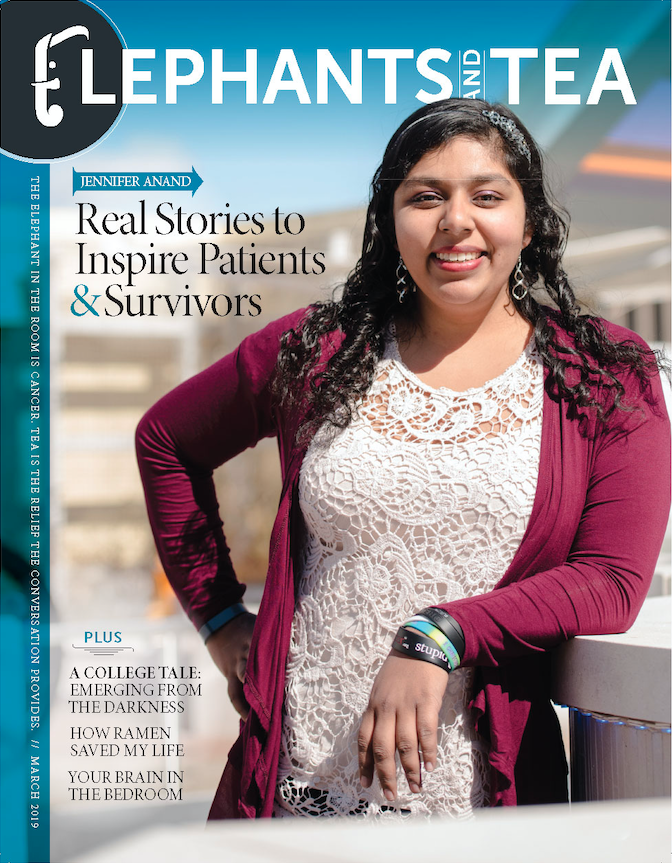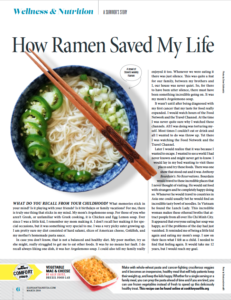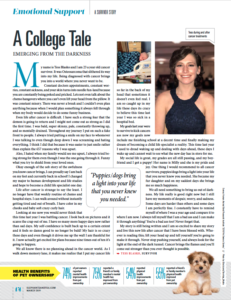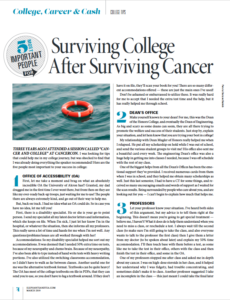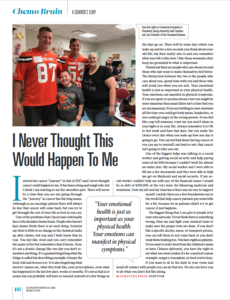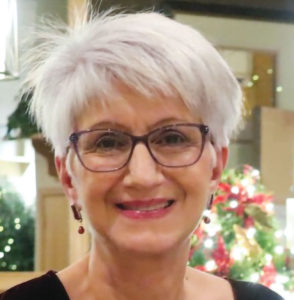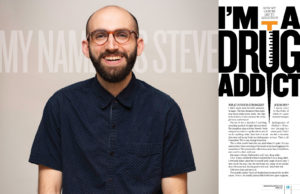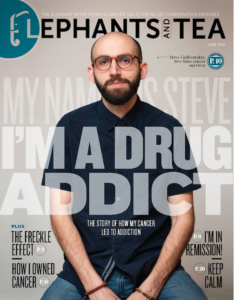Despite the Hell of Cancer
Launching to tell the stories of patients, survivors, and families
Interview with Nick Giallourakis
The elephant in the room is cancer. Tea is the relief conversation provides.
That’s the tagline of Elephants and Tea, a new magazine launch by publishing industry veteran, Nick Giallourakis, and his mother, Angie. They launched the magazine because they saw a need for honest, practical content for adolescents and young adults battling cancer. Their biggest inspiration? Nick’s brother and Angie’s son, Steve, a two-time cancer survivor.
There’s one particularly powerful mantra guiding this duo: Listen to your audience. Nick learned the importance of this from Penton; Angie learned it from working as a patient advocate. When the two held multiple focus groups and really listened to what their prospective audience had to say, it upended their plans for this magazine. And led to a successful splash-of-a launch. We sat down with Nick to learn more.
Tell us the story behind Elephants and Tea?
My brother Steve has survived cancer not just once but twice. He was diagnosed with stage four osteosarcoma when he was 15 years old, and he beat it. Then he was diagnosed with secondary Acute Myeloid Leukemia (AML), a completely different cancer. He received a good bone marrow transplant and beat that as well. It’s been 10 years and two months since that transplant; he’s 28 years old now. We have witnessed his struggles, both as a patient and now as a survivor, and that motivated us — my mother and I — to create a content resource targeted to this AYA age group. That’s adolescents and young adults, ages 15-39, dealing with cancer.
Why a magazine?
For starters, it was clear to us that there were limited resources — and no magazines — in this space. And there’s a real need. We saw Steve, and others in a similar position, always searching for information and resources specific to them. And secondly, my professional background is in publishing. I worked for Penton (now Informa) for eight years on the central marketing services team. My work ranged from producing webinars to providing integrated sales support to directing digital products and selling advertising. My mother, Angie, works with patients and families affected by cancer. She started a nonprofit called The Steven G. AYA Cancer Research Fund, in honor of my brother, which helps fund research on AYA cancers at Case Western Reserve School of Medicine here in Cleveland. She works closely with patients, survivors, and their families as an advocate. We decided to merge our skills and expertise — my mom’s deep understanding of what these folks go through and my knowledge of publishing — and create something from scratch.
What did you learn at Penton that you’re now applying to this endeavor?
My biggest takeaway from Penton is making sure you understand your audience and what they want, and why. That upfront research is essential to setting a solid foundation for any kind of publishing or content marketing effort.
How did you do that?
We asked our target audience directly. Through her work, Angie knows a lot of people. We leveraged those connections to pull together groups of patients and professional caregivers in focus groups. We ran five groups over five months, each with a half dozen or so people. And what we learned literally changed the course we had planned for the magazine.
How so?
When we started, our notion was to run like a standard magazine, with editors doing interviews and a lot of the writing. What we heard from the survivors in our focus groups was consistent across the board: They didn’t want that model. They flat-out wanted to hear stories directly from the people who are going through cancer, or those affected by it. They didn’t want to hear from people who had no direct experience with cancer, even if they’re working in the field. We took this feedback seriously and pivoted in our approach. One hundred percent of our content comes directly from a patient, survivor, or family member who has been affected by cancer. This has caught fire and driven a ton of interest in the publication.
It carries a lot of weight with this audience if the people behind the content are sharing their direct experience. It’s relatable. That’s the word we keep hearing from our audience. For patients and survivors, they hear voices and stories they can relate to — and that’s so badly needed for this age group. Keep in mind that there aren’t a lot of them together at a hospital going through treatments. If you’re in your early 20s, you might be at an adult clinic with 60 and 70 year-olds. Where do you turn to find out how to get through college while on treatments, or how to communicate with your young friends about what you’re going through?
On the provider side, social workers, program managers, and oncologists tell us how helpful it is that they can point a patient to an article written by someone who has the same kind of cancer or is in some other way relating to the same struggle as their patient. That voice of direct experience has become central to what we’re doing.
And did they tell you what kind of stories they want to hear?
Yes, and that proved our assumptions somewhat wrong again. We thought they’d want topics that included things like advocacy and research. But no. They truly want it to be where they can read about what other people are going through so they don’t feel alone.
So we’ve developed five areas of editorial: wellness & nutrition; emotional support; college, careers & cash; sexuality; and chemo brain. That last one — I had heard the term before but didn’t realize how much “chemo brain” impacts patients. Many experience nagging cognitive and memory problems and want to know how others are coping. The section that we don’t yet have a ton of content but is damn popular is sexuality. It’s a topic that isn’t talked about enough — even, our readers say, by their doctors. But as young adults they want to know how to manage their intimate relationships as they’re impacted by the effects of cancer and treatments. People don’t know where to go for this type of information. Now they can come to us.
What is your revenue strategy for the brand?
The magazine and our online content are totally free. At the end of the day, we wanted this resource to be accessible to patients and their families. If someone wants the content, they can get it. So our revenue model is based on advertising, or what we call “sponsorships,” in the magazine and online.
We’re focused on bundling. While we’d love to get all print ads, in my experience, advertisers aren’t interested in just print ads; they want digital exposure as well. They want a variety of options. So we’ve created (and are evolving) different packages that include print and digital, as well as options for newsletter sponsorships and native advertising. While our print magazine comes out four times per year, the newsletter comes out weekly, and our website and social platforms are ongoing, so there are options for consistent visibility. We offer three packages that each include a mix of benefits — our Herd, Elephant, and Tea Packages.
Separate from these, we offer advertisers the option to sponsor one of our six editorial categories for a month. This is something we did at Penton. You can sell this at a relatively high price point because the advertiser owns the entire category of content for the timeframe. And it’s fairly easy to execute — the client’s name and logo appears on every article in the category. Additional benefits include a mix of digital ads, social media posts, and some native advertising opportunities.
What are you offering for native advertising?
I’ll give you the example of a native client we just signed on. This is a healthcare company, a community app. In this case, they have content already created, and we’re giving them a space on our homepage to post six articles over a period of six months — two weeks on, two weeks off. They’re free to vary up the article between postings. We have three featured spots on our main webpage. We’re dedicating one of them to sponsored content, so that’s where these articles appear, labeled as sponsored content. This gives an advertiser premium real estate and inclusion in our site search.
With the exception of being labeled as sponsored content, their articles appear like full-fledged content, in the flow of our content environment. This is important to our philosophy and guiding principle of keeping everything relevant (and relatable) to our audience. The advertisers we choose to work with have content that’s meaningful to our readers.
The other aspect to this native campaign is that our advertiser also gets 10 “related article” links. So on 10 of our own articles, we provide a related content link, designated in a grey box, that links to a pertinent advertiser article. There’s a win-win here with respect to relevance. Our readers are finding links to content that has something to do with the article they’re already reading. And our advertisers are engaging a reader who’s looking for something that falls in line with what that advertiser offers. While achieving this relevancy can be tricky and takes a concerted effort, it’s ultimately the best for our users and advertisers.
Are you having luck finding advertisers with this synergy?
As with any new magazine, it’s a work in progress. Advertisers have been very responsive, and they love what we’re doing. We’re continuing to scale our readership to meet advertisers’ needs for exposure. And we’re again talking to our readers, asking what they want to see in advertising. This has helped us to recognize the potential in the beauty and wellness category. Makeup companies, for instance, have found a niche in helping cancer patients “look and feel their best.” Brands like Sephora, Walgreens, and CVS come to AYA conferences and provide free makeup lessons to attendees. And there are services like food delivery that are a perfect fit for our audience — delivering healthy meals right to their doors. We’re making sure the companies we’re targeting for advertising are a good fit for our audience.
Let’s talk about audience. How are you building a following?
We started off by building a database of individuals. That’s the main goal, right? When you’re developing anything from a lead generation standpoint, you want names in the database. We knew this was going to take a while to grow, so we decided to proactively tap into the different groups Angie has been associated with, and this has led us in an interesting direction. We’ve been distributing the magazine to hospitals, right to the individuals running AYA programs. We started off sending 25-50 copies to each program and as soon as they saw it, they called me asking for more.
The professionals, social workers, and program managers say they didn’t realize how much a magazine was going to resonate with their patients. Because again, this population being in their 20s and 30s, they’re picking up the magazine when they’re expected to be on their phones, or tablets, or whatever they’re using in a hospital bed. But they love having a magazine. It gives us credibility — having something to actually hold in their hands that isn’t digital helps validate who we are and what we have to offer. We’ve already more than doubled the number of hospitals we’re sending copies to.
Here’s what I love about print magazines. One of the hospitals, MD Anderson in Houston, is a top-ranked cancer center in the country. Their AYA program originally told us they just wanted a digital version. I said, “Okay, no problem. I get it. That’s where you want to go with the test. Let me send you one copy just in case.” Before they even got the copy, when they were looking at it digitally, they called me back and asked, “Can we feature this with all of our attendees at our conference in June? We’ll need 200 copies.” That’s the power of print — tangible, immediate, tactile, in your hands.
The other big driver for us has been social media. We developed a strategy wherein we target and connect with other AYA organizations. They see our posts and share them with their audiences. It has created a snowball effect. We’ve had organizations we didn’t even know about pick up on the magazine and share it. Like, in Canada. We didn’t anticipate having an audience there, but a few programs found us on social media and started re-sharing our content, so now we do.
You mentioned the effort to build your database. How is that going?
This is where I’ve really taken a page from the Penton book. And I’ve seen plenty of organizations struggle with this in publishing. When you’re getting someone to sign up for something, make sure you’re getting the data you potentially need down the road — particularly, to enable you to deliver relevant content. So anytime someone is downloading our magazine or signing up for our newsletter, we make sure we understand why they’re doing it. It’s pretty simple as far as the information we gather. In addition to name and email address, we ask: What is your relationship with cancer? Are you a patient? A survivor, caregiver, sibling, nurse, oncologist, etc.? Then, two: What type of cancer do you or your loved one or the person for whom you are researching have? So within our database, we can see what type of content people are looking for. In the long run, we can cater to a breast cancer group, or a sarcoma group and say, “Here’s all the content that may be of interest to you.” This in turn can lead to new revenue opportunities. We can tell an advertiser, “We have X many people in our audience who are affected by breast cancer.” At some point, we’ll add additional questions, like when someone downloads a gated piece of content. But for now, we want to ask the minimal number of questions that will give us the information we need while keeping the barrier to initiation low.
Another important audience driver for us is live events. We’ll go to probably 8-10 conferences this year. The same theory applies. If you want people to sign up for something, give them something in return. At a couple of the larger conferences this year, we gave out t-shirts to attendees who signed up for our newsletter, and that was hugely successful. During a multiday event, you start seeing people walking around wearing your shirt, and they’re telling their friends where they got it. And of course this spills over to social media — especially if your shirt design is a hit.
Our approach was: Sign up for our weekly newsletter, and we’ll give you a copy of the print magazine and a t-shirt. This enabled us to collect the minimal data at that moment — which we did on a tablet that linked directly to our database. Their automatic confirmation email offered a clear option to sign up for the print magazine, a step that would then require more info, including their mailing address.
What has been your biggest lesson learned in the launch of Elephants and Tea?
Listen to your audience. I think we’re so focused on trying to get the quick dollar that we can bypass or drift away from our readers’ needs. Ask and listen, even if that means it takes longer to get started. I believe this sets a stronger foundation for long-term growth and success. That, and don’t be afraid to try different things. If you’re listening, your readers will tell you when you’re on the right track.
Nick Giallourakis is co-founder and president of Elephants and Tea, a media company for adolescent and young adult (AYA) cancer patients, survivors, and caregivers. He’s also is the founder and CEO of Gilly Media, which advises B2B professionals on digital strategies. Nick previously worked for Informa (formerly Penton Media). Connect via giallourakis@pagesthemagazine.com.

